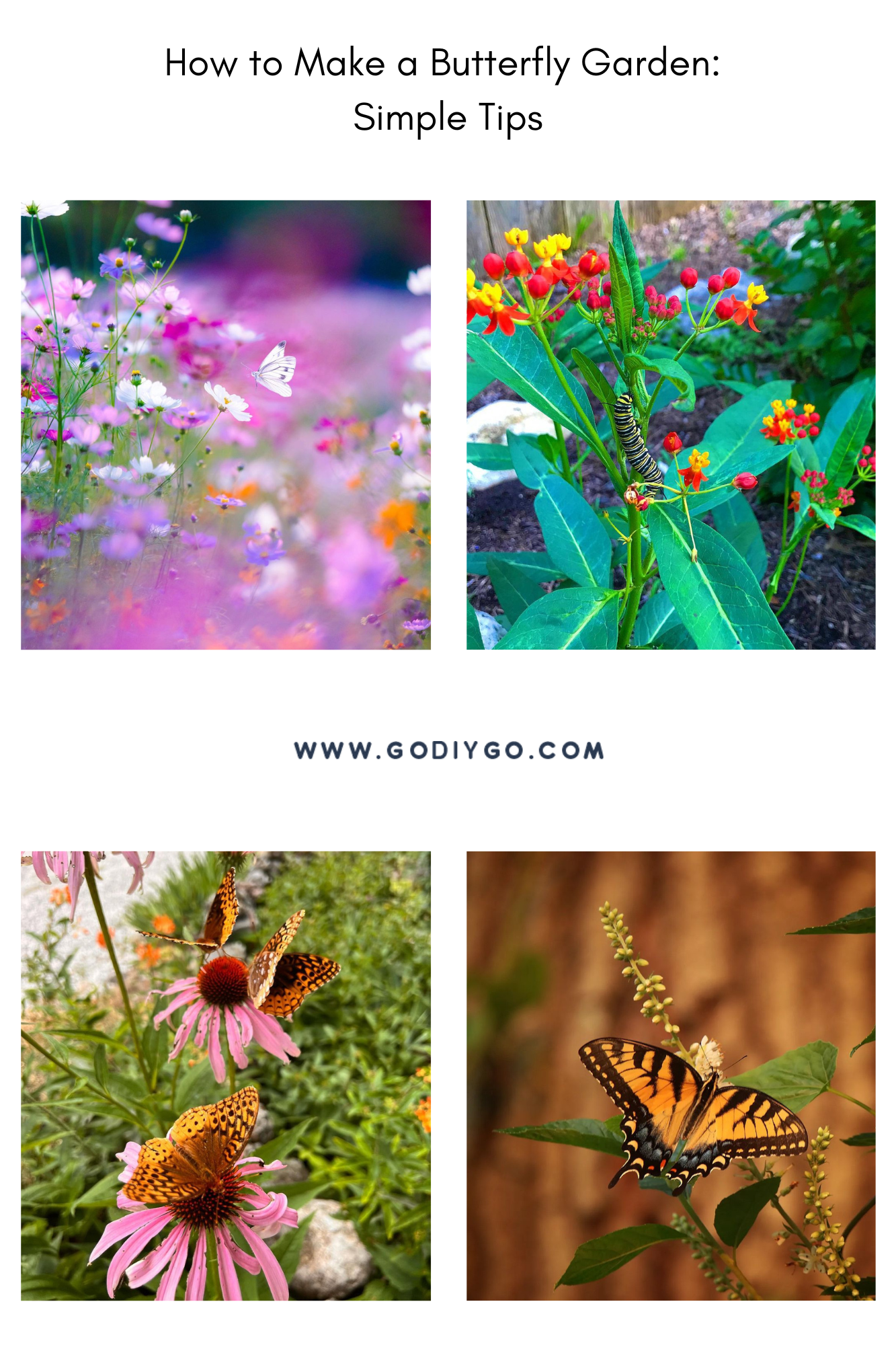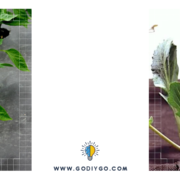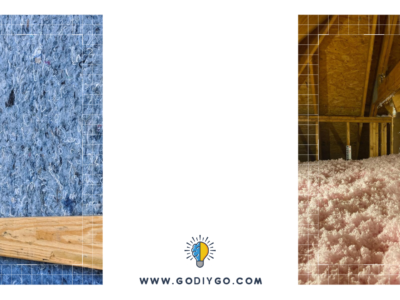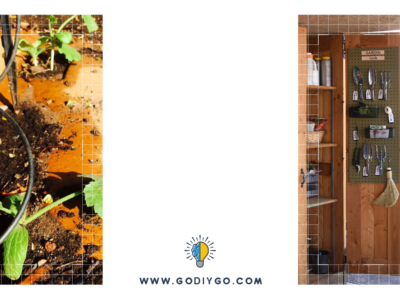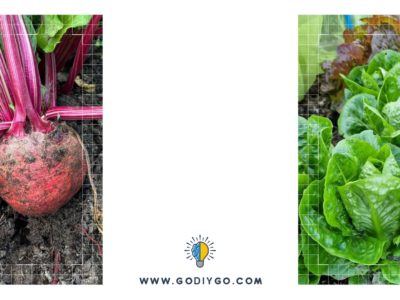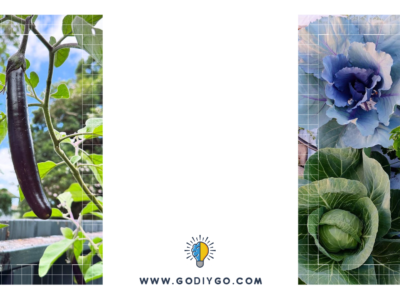Imagine your garden as a vibrant butterfly haven! It’s not just about adding beauty; it’s about creating a place where monarchs thrive. With flowers like butterfly bush, butterfly weed, and ‘Butterfly Blue’ pincushion, you’ll have these winged visitors flocking to your yard. Understanding their life cycles and feeding habits can make your garden irresistible. Keep reading for essential tips to make your butterfly garden flourish!
1. Choose Flowers That Butterflies Love
It’s hard to find a flower that butterflies don’t like! The good news is, many flowers that butterflies love will also bring in bees and even hummingbirds. For a lively and thriving garden, you’ll want all these little visitors around! Check out these popular perennials, shrubs, and nectar-rich blooms that are sure to attract butterflies.
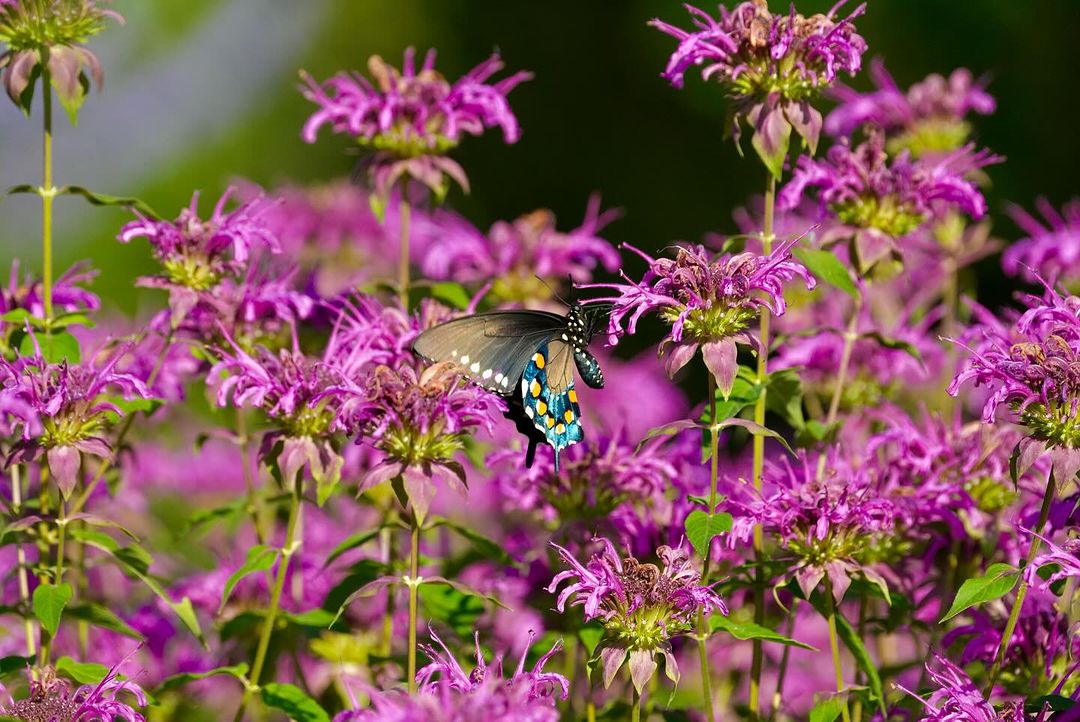
A butterfly garden is great because it attracts beautiful butterflies and helps them thrive. Pipevine swallowtail from @ momstheword12
-
Perennials
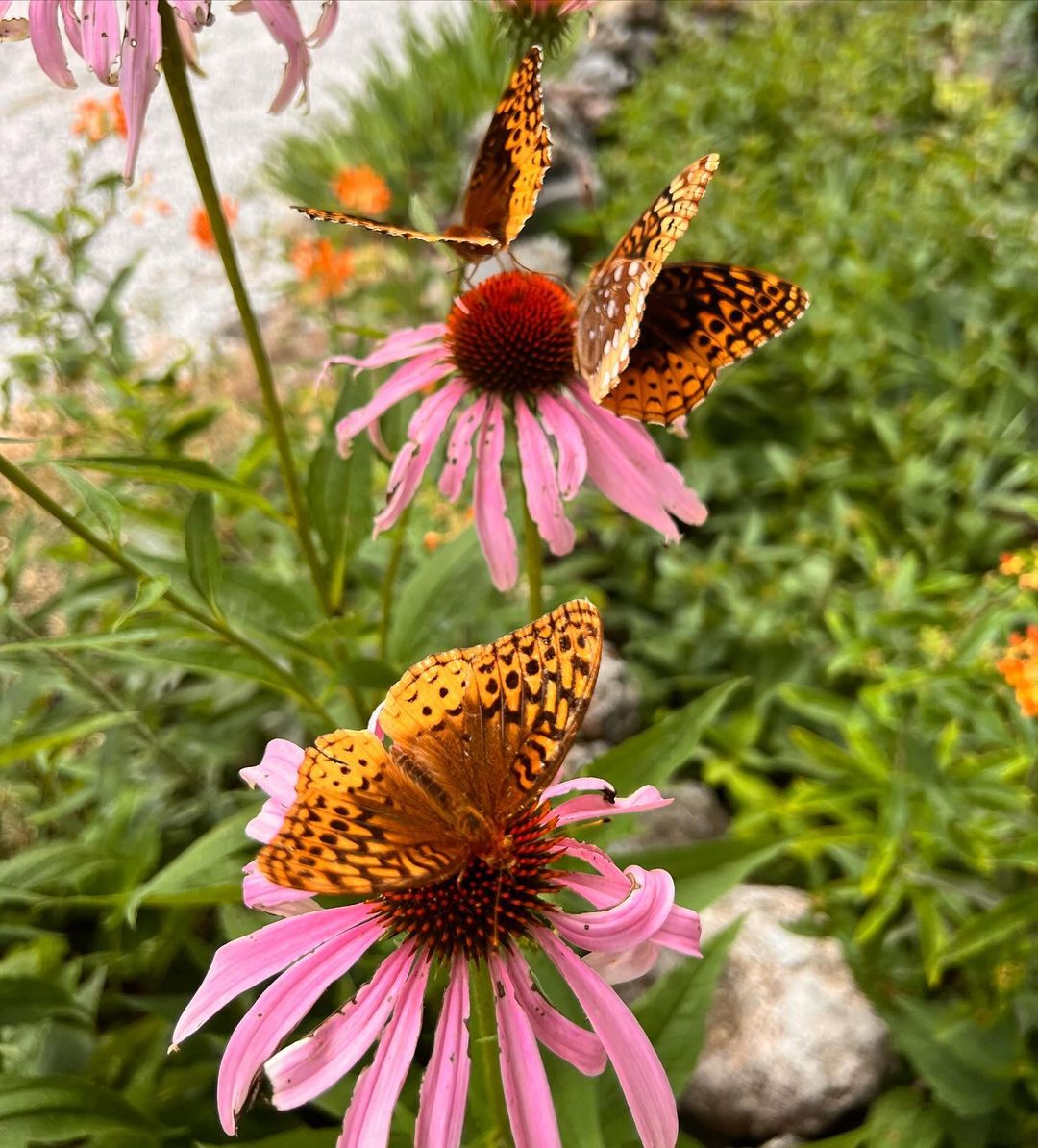
Butterflies can’t get enough of coneflowers because they’re loaded with nectar and super easy for them to snack on. Spangled Fritillaries on Purple Coneflower from @ earthimlandscapedesign
Butterfly gardens are full of bright, colorful flowers with shallow blossoms that make it easy for butterflies to sip nectar. Some of the classic favorites for these gardens are:
- Milkweed
- Coneflowers
- Hyssop
- Asters
- Liatris
-
Flowering Shrubs
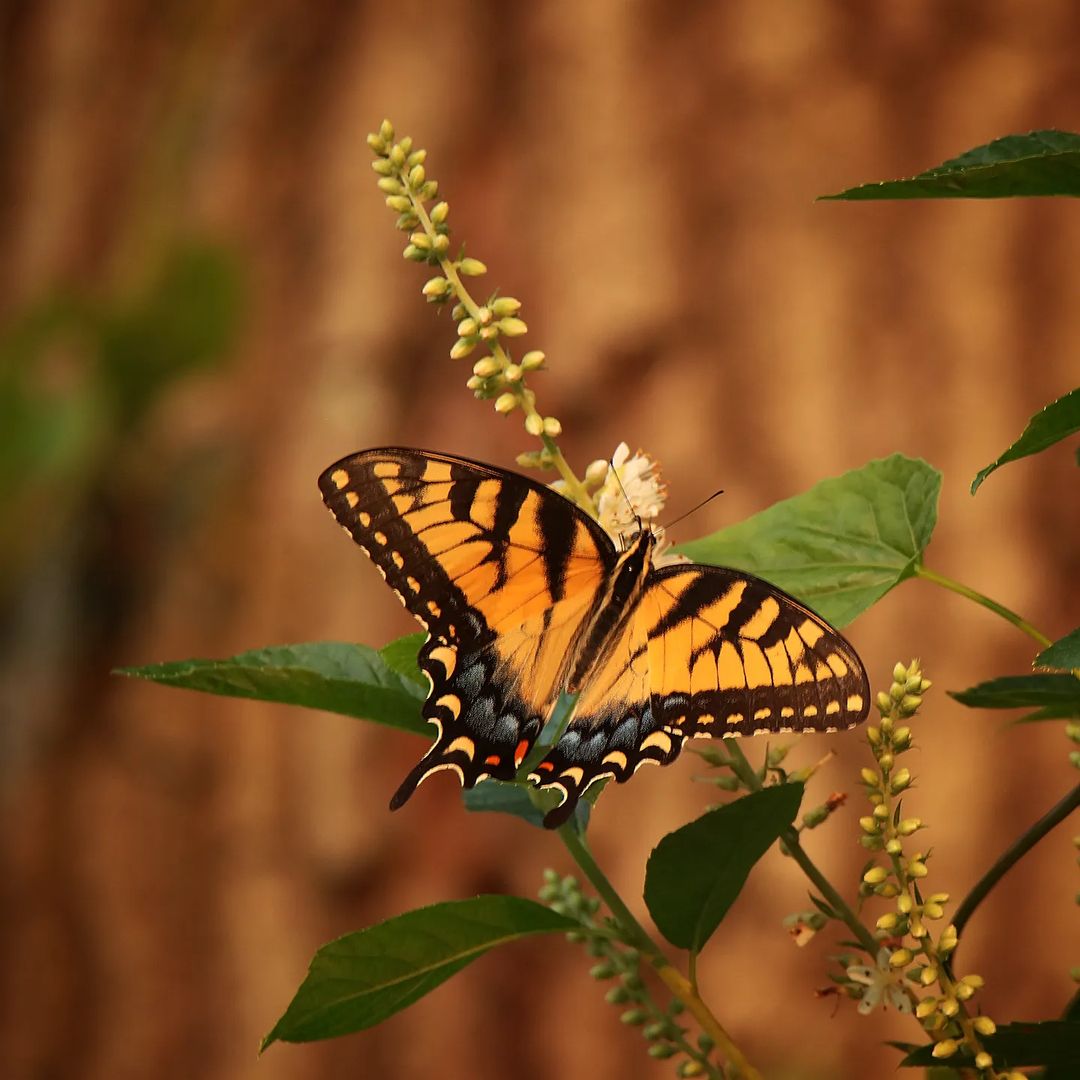
Sweetspire’s fragrant, nectar-rich flowers make it a favorite stop for butterflies looking for a tasty treat. Eastern Tiger Swallowtail on sweetspire from @ ks337photo
Flowering shrubs not only provide structure to your garden but also nourish butterflies. These plants thrive in full sun, which butterflies need to keep their metabolism going. Be sure to include these:
- Viburnum
- Scaevola
- Sweetspire
- Elderberry
-
Nectar-Rich Flowers
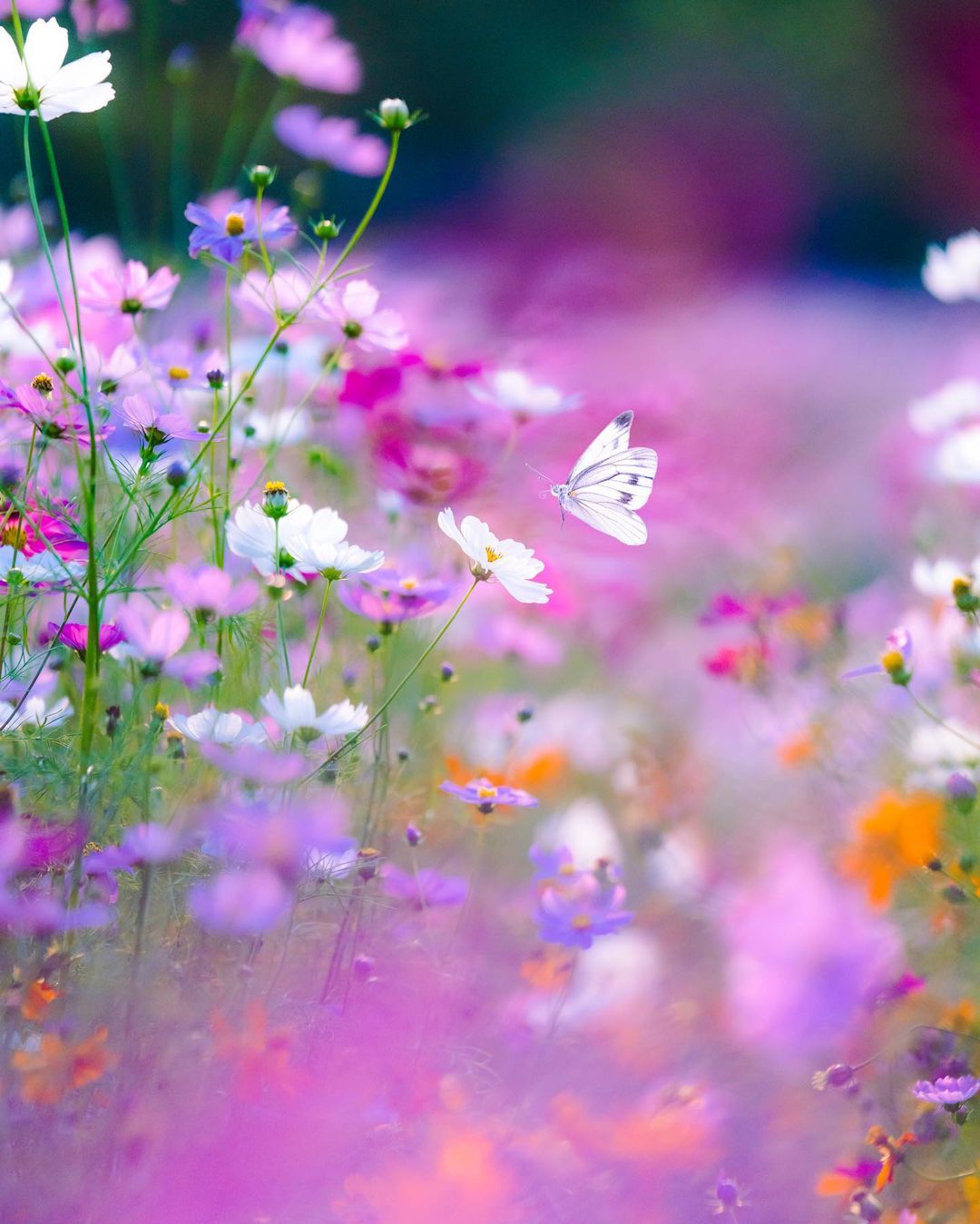
Cosmos flowers are a butterfly magnet. Thanks to their bright colors and abundant nectar, making them perfect for attracting these beautiful insects. Cosmos and butterfly from @ astrailor_jp
Go for nectar-rich flowers rather than sterile hybrids to keep butterflies well-fed. Plant these flowers in groups rather than singly, as butterflies prefer hopping from bloom to bloom within the same flower type instead of flying long distances between different plants. Consider adding these:
- Pentas
- Cosmos
- Lantana
- Petunias
- Zinnias
2. Mix Up Flower Heights
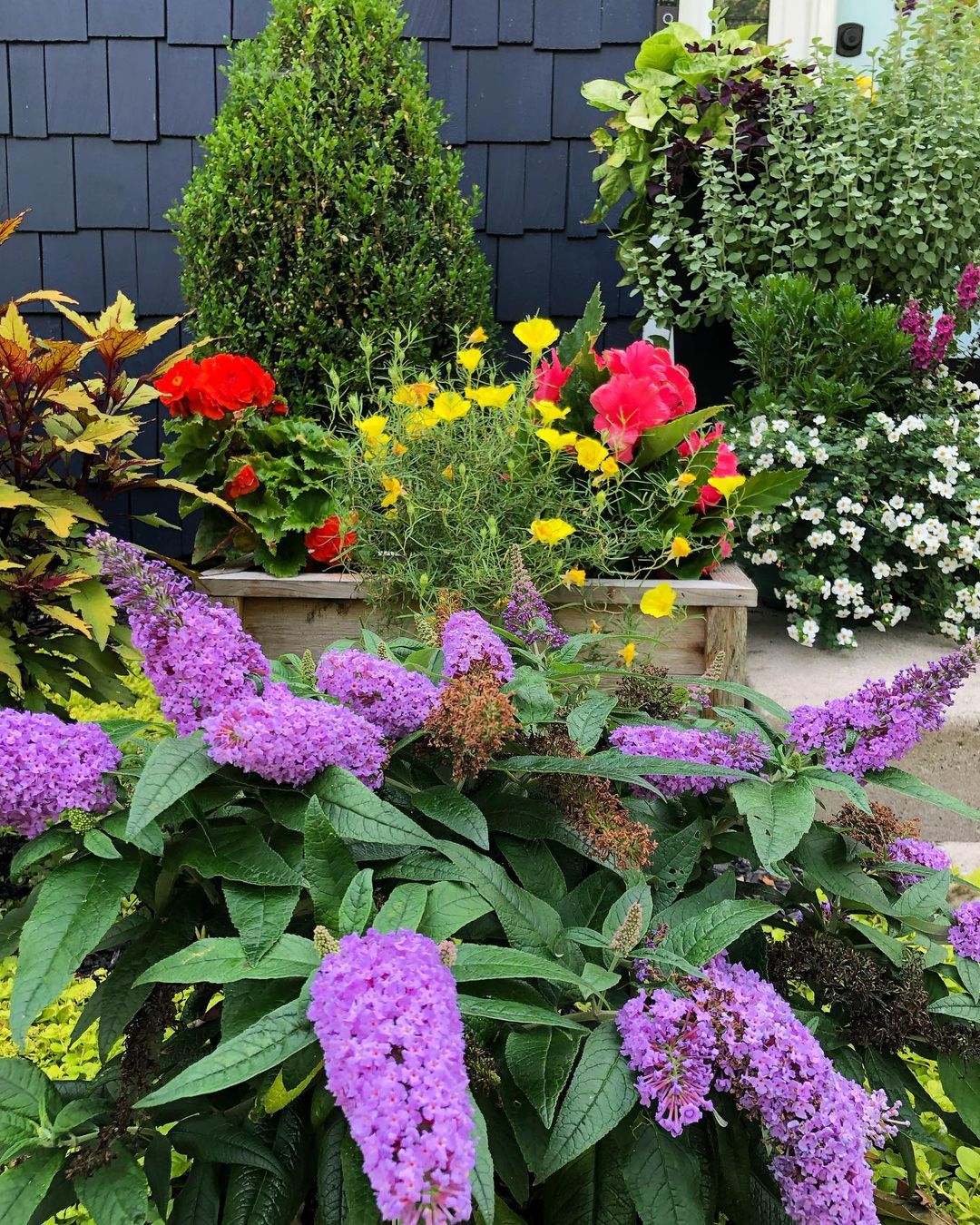
Planting flowers at different heights makes your garden look amazing and brings in all kinds of butterflies. Garden ideas from @ missminniecole
Besides having a mix of colors, make sure to include plants of different heights to draw in more butterflies. While a neat row of short flowers might look nice to us, it won’t meet the needs of all butterflies.
In the wild, butterflies tend to feed at specific heights. By planting flowers at various heights, you can create a beautiful, professional-looking garden and attract a wider range of butterflies. For instance, tiger swallowtail butterflies go for tall flowers like Joe Pye weed and honeysuckle vines, while the least skipper and little yellow butterflies prefer lower-growing flowers like lavender, dianthus, and asters.
3. Include Plants for Caterpillars
Dedicated butterfly gardeners know to plant both nectar and host plants to support butterfly life cycles. Host plants give females a spot to lay eggs and provide essential food for caterpillars. Here are some top choices:
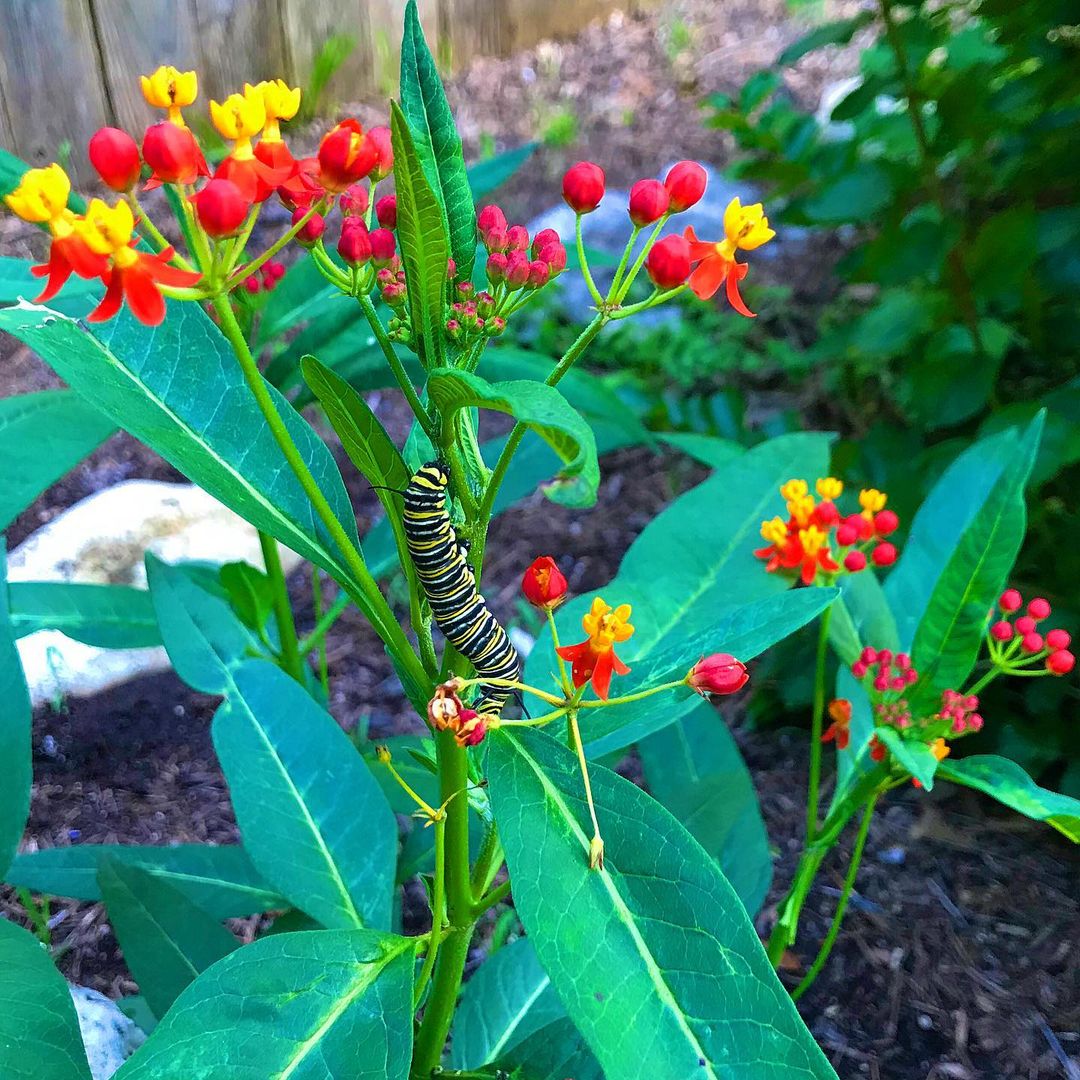
Pollinator-friendly plants are great because they attract bees, butterflies, and other beneficial insects to your garden, promoting biodiversity and helping your plants thrive. Caterpillar from @ secahoseholder
- Asters are great for migrating butterflies in the fall and also serve as food for pearl crescent caterpillars.
- Butterfly weed and other milkweeds are crucial for monarchs, offering them a toxin that deters predators.
- Passionflower feeds the showy zebra longwing caterpillars, commonly seen in Florida and Texas.
- Sweet peas attract the iridescent Eastern tailed-blue butterfly in the Eastern U.S.
4. Pick a Sunny Spot
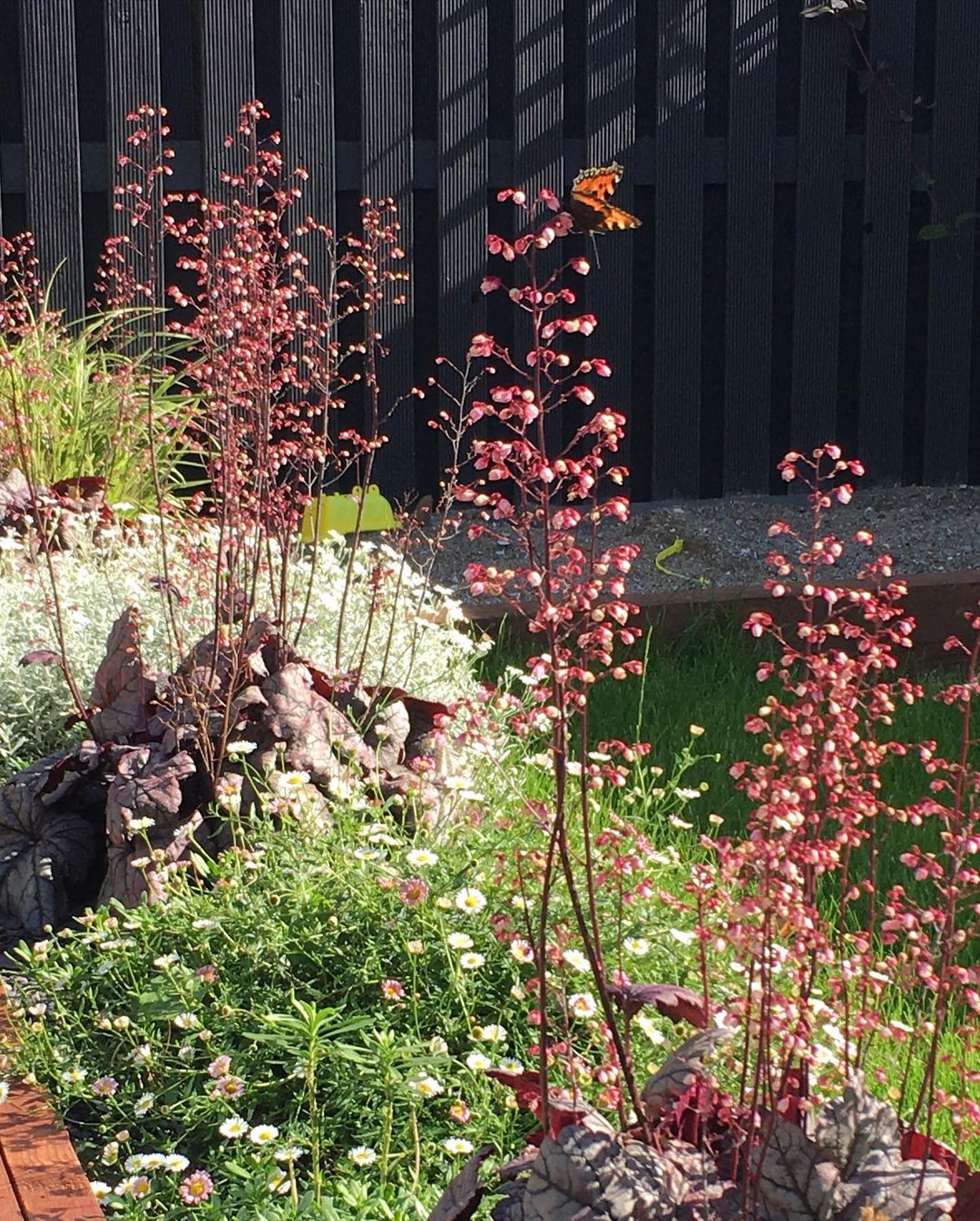
To keep butterflies warm and active, place materials around your yard that quickly absorb morning sun, like flat stones, patches of soil, and even pavement. Back garden from @ mrsgoughshomedecor
A sunny location, especially in the morning, is crucial for a butterfly garden. Butterflies and the nectar-rich plants they rely on thrive with 6 to 8 hours of full sun daily. Here’s why butterflies need sunlight:
- They are cold-blooded and prefer to feed when it’s sunny.
- Morning sun helps them warm their wings and bodies for flight.
- Sunlight in the morning helps them orient themselves before flying.
5. Create Butterfly Resting Spots
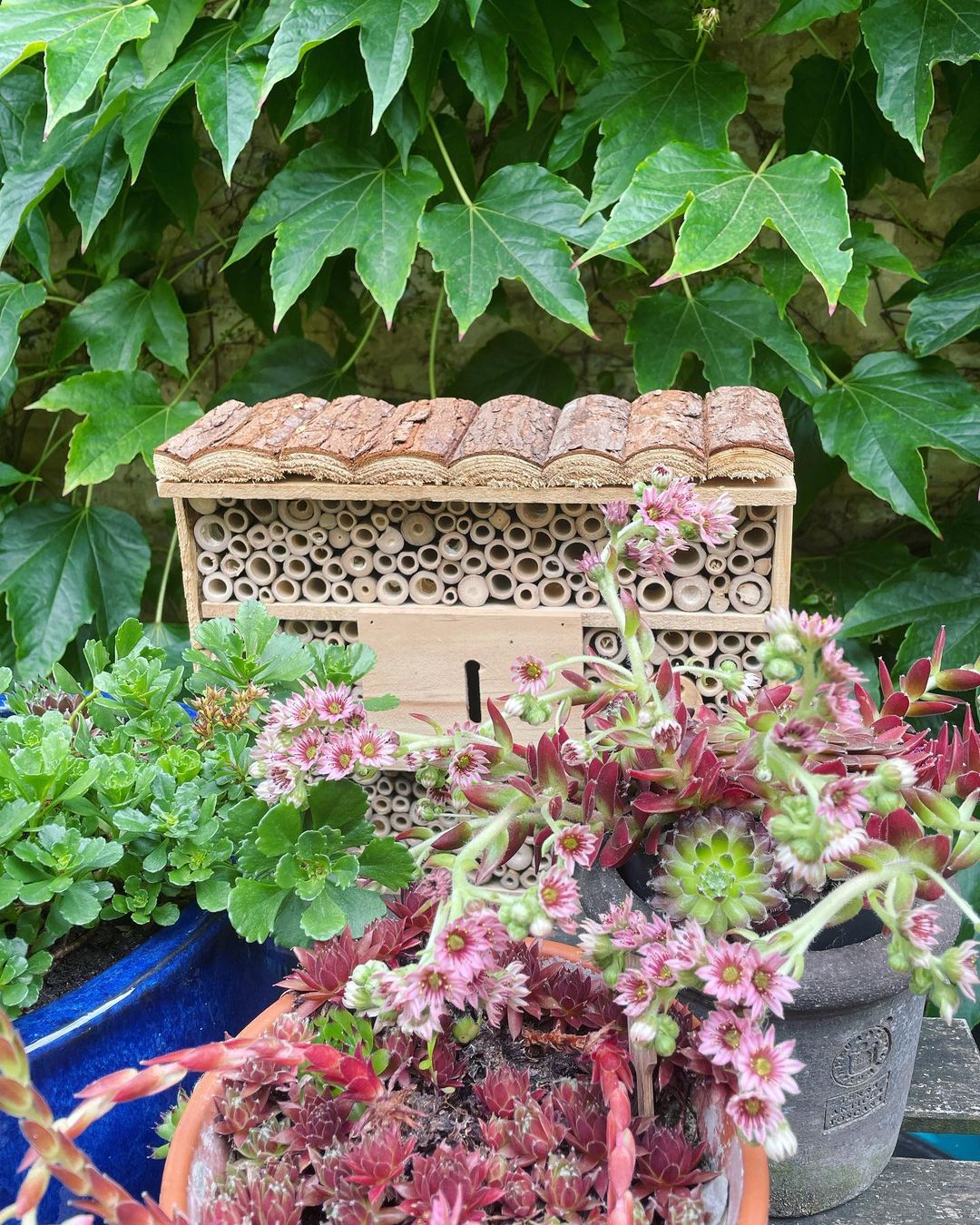
A designated resting spot in your garden offers a tranquil area where butterflies can relax, soak up the sun, and rejuvenate. Garden decor from @ plantstodo
Butterflies look for shelter from wind and rain in natural spots like dense bushes or stacked wood. Butterfly houses, which resemble wooden blocks with tall, narrow slots, can add a colorful touch to your garden. However, they might attract paper wasps instead of butterflies, so butterflies usually prefer other spots to hibernate or rest.
6. Provide Other Food Options for Butterflies
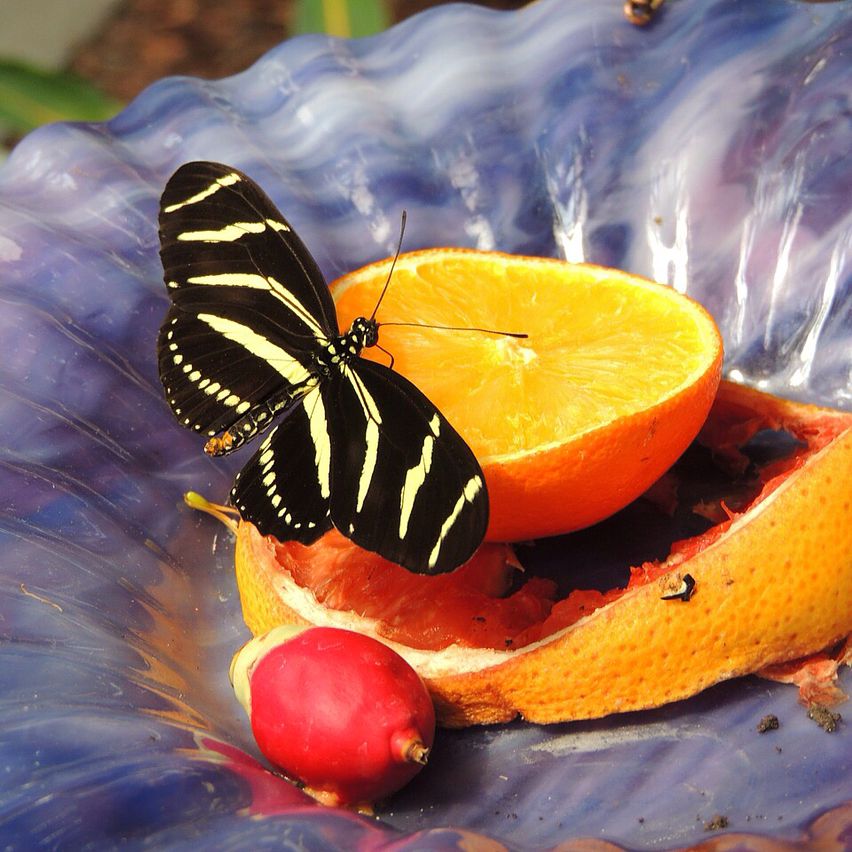
Offering sweet liquids or soft fruits in shallow dishes provides adult butterflies with sustenance when nectar plants are not flowering. Butterflies from @ tottrove
Keeping all your nectar and host plants thriving throughout the season can be a challenge. Luckily, many butterflies also enjoy alternative food sources like sweet liquids or soft fruits. Placing these in shallow dishes helps sustain adult butterflies when nectar plants aren’t in bloom. Remember to change the fruit regularly to discourage wasps and ants from taking over. You can also cover the fruit with a window screen to keep out unwanted insects while still allowing butterflies to feed through their long proboscis.
Include these alternative foods in your butterfly garden:
- Overripe fruits such as peaches, pears, apples, and bananas
- Canned fruit nectar
- Fruit juice
- Sugar water
- Clear sports drinks
- A drop or two of molasses mixed with fermented beer can act as a sweet treat for butterflies. To prevent them from getting stuck, place a tiny drop on a small sponge before setting it on the fruit.
Butterflies taste with their feet before using their proboscis, so providing a sponge can help with absorption and avoid trapping them in sticky substances like molasses.
7. Set Up Butterfly Puddling Stations
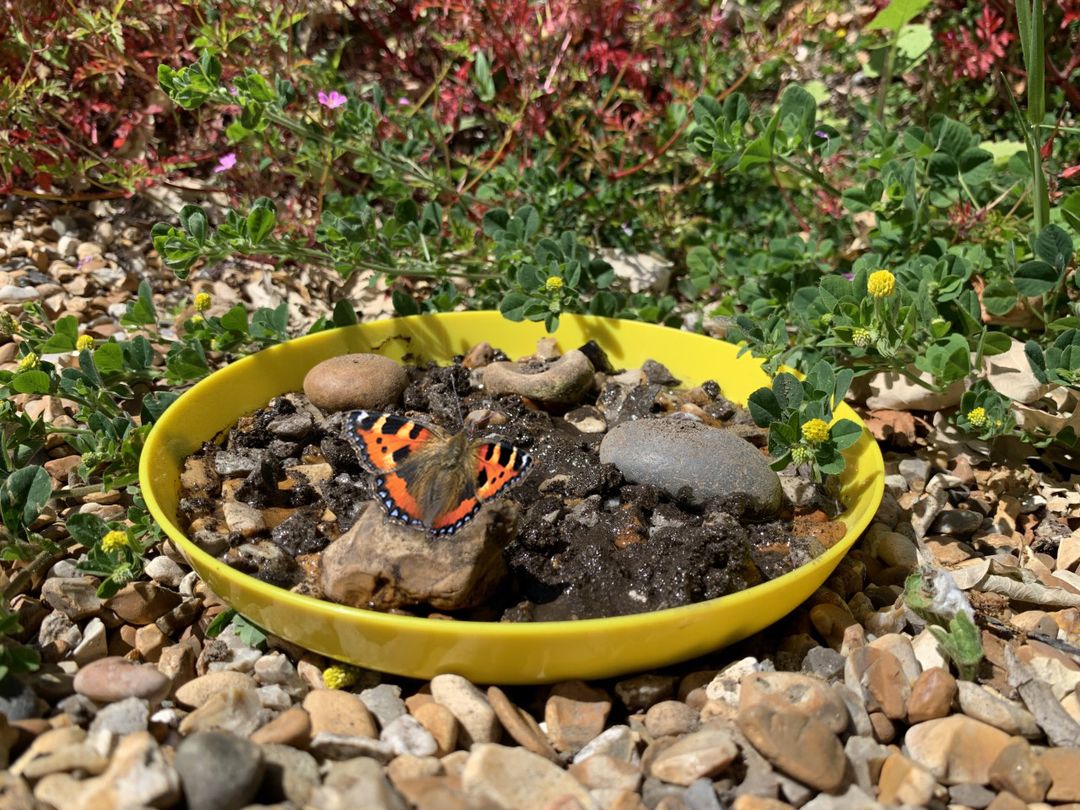
Set up a shallow dish with pebbles or sand filled with water to create a refreshing drinking spot for them on hot days. Puddling station from @ surreywildlifetrust
Butterflies love shallow puddles in the garden for drinking water and getting essential minerals. Cloudless sulphur and sleepy orange butterflies, in particular, gather in muddy spots, bog gardens, or near plants like partridge pea, which their larvae feed on. Watch for this puddling behavior during the hottest times of day, and avoid using chemicals that could harm these delicate butterflies.
8. Avoid Pesticides Harmful to Butterflies
When dealing with pests in your butterfly garden, it’s important to be careful. Most pesticides can harm or even kill butterflies, along with other helpful pollinators such as bees and parasitic wasps. Even organic options like insecticidal soap or neem oil can affect butterflies by disrupting their feeding and mating habits. However, you don’t have to surrender your flowers to pests like aphids.
Only use pesticides when you have a serious insect problem, not as a preventive measure. Consider alternative pest control methods like using floating row covers, spraying water to remove small insects, or manually removing larger pests such as beetles from your plants. These approaches can help keep your garden healthy without harming butterflies and other beneficial insects.
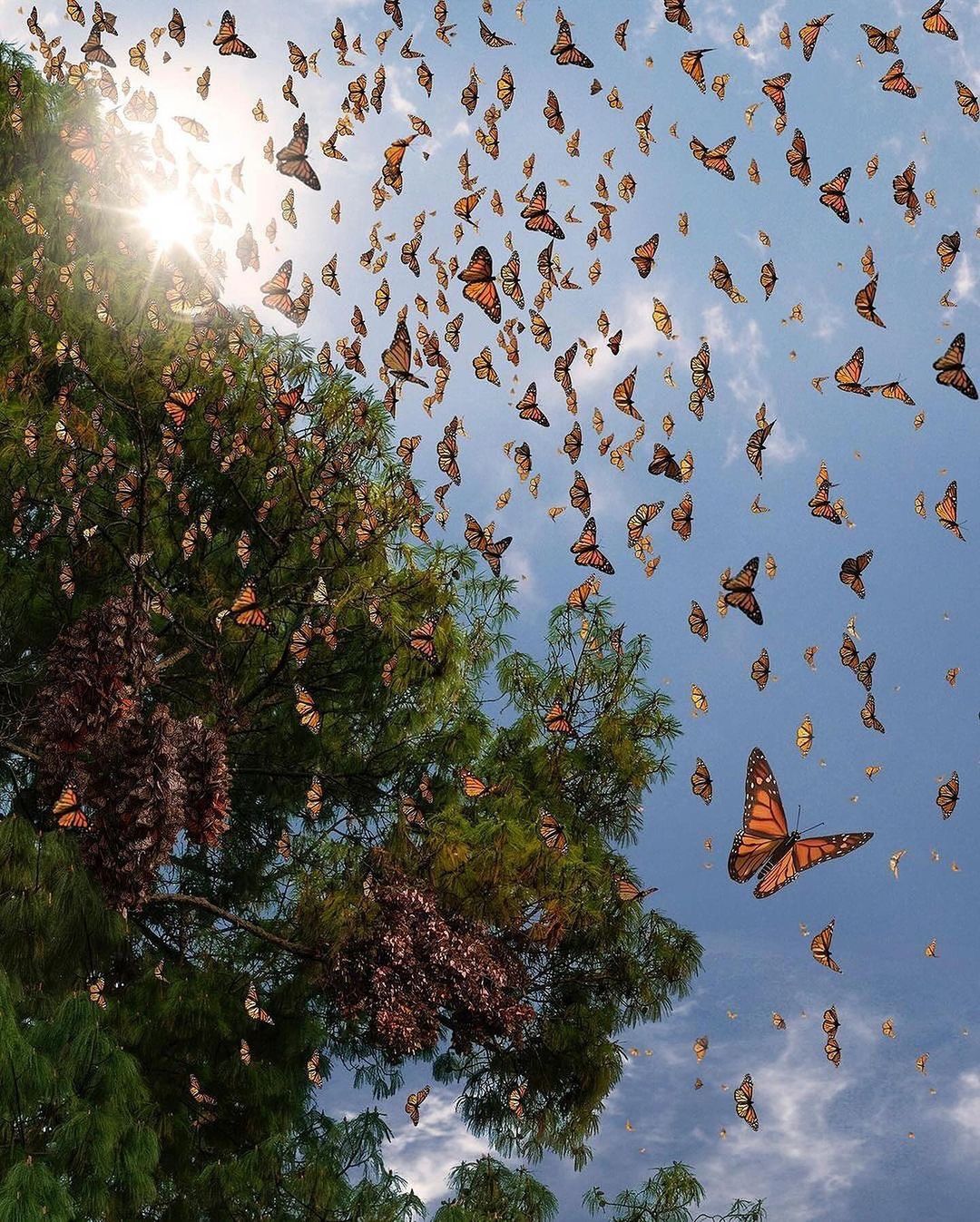
Having a butterfly garden lets you enjoy beautiful butterflies while providing them with a perfect habitat to thrive. Adorable butterflies from @ tripfervor



